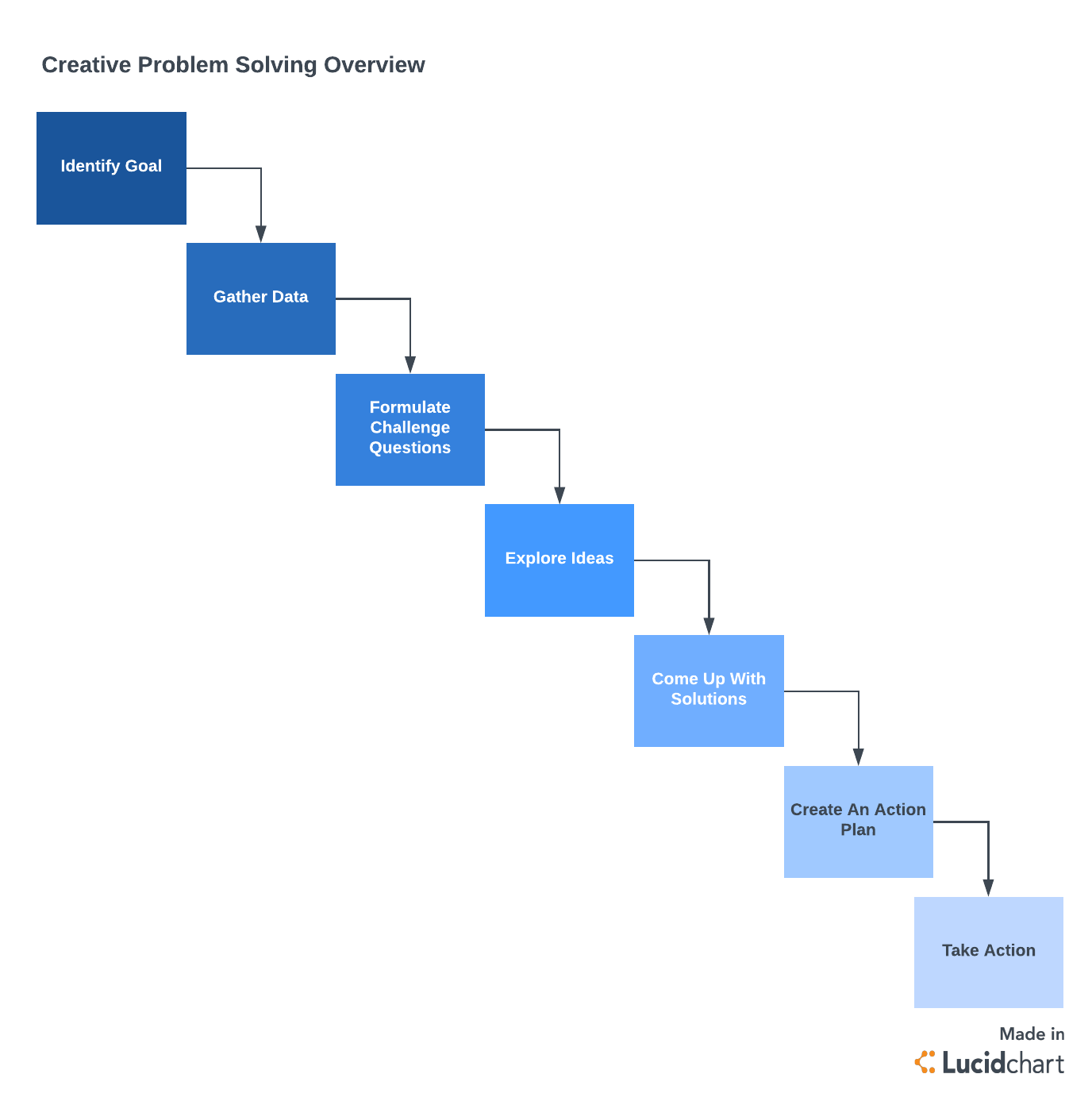Identify what the problem. 14 types of problem-solving strategies.

Six Inspiration Techniques Creative Problem Solving Associative Thinking Creative Problem Solving Problem Solving Problem Statement
There might be different skills and knowledge held by each team member this could be used effectively to resolve different administrative problems.

. Problem-solving skills are important in every career at every level. The way you define the problem will determine how you attempt to solve it. Identify the nature likely cause and implications of a problem.
Identification of project risks. Systems approach is widely used in problem solving in different contexts. The most important of the problem solving steps is to define the problem correctly.
Explain the use of different problem-solving techniques x Problem-solving techniques. In the early stages of problem-solving you need to have strong observational skills. 13 Describe the role of stakeholders in problem-solving.
SWOT analysis strengths weaknesses opportunities threats. The key processes involved eg. Understanding a Problem or Opportunity.
How to do this. Definition of work product task attributes and project life cycle. The sections below help explain key problem-solving steps.
11 Explain the use of different problem-solving techniques. Developing a solution steps 3 through 5. Business problems can also be analyzed and solved using this approach.
Helpful problem-solving techniques include using flowcharts to identify the expected steps of a process and cause-and-effect diagrams to define and analyze root causes. INTRODUCTION In order to facilitate prospective teachers understanding. Explain the use of different problem-solving techniques Problem-solving techniques.
12 Explain the organisational and legal constraints relating to problem-solving. Root Cause Analysis RCA is a method of problem solving through identifying the root cause of the problem analyzing it and drawing up a plan for resolving it. Problem solving can be achieved by using evaluation and control mechanisms consciously in the learning process.
Problem Solving FundamentalsLecture 2. Act make a plan and act on it. The activities and steps of the systems approach are typically grouped into a smaller number of stages of problem solving.
Task 2 Identifying constraints. These will help you properly assess whats going on and pinpoint the core cause of the issue. Define problem and problem solving.
Rather than accepting issues at face value you need to demonstrate lateral thinking and analytical abilities. Problem solving for information technology. The different types of problem solving techniques in business used in problem-solving.
Control mechanism evaluation mechanism learning systems problem-solving techniques semiotic declarative knowledge model. Examine what are the options available to solve the problem. PESTLE analysis political economic social technological legal environmental.
Implementing a solution steps 6 and 7. How to select the best solution for the situation. Some key problem-solving skills include.
Explain the features of different problem-solving techniques related to information systems B Problem-solving techniques. Discuss problem solving from the perspective achieving problem goals. Risk analysis RCA root cause analysis.
Taking the time to define a potential challenge can help you identify certain elements to create a plan to resolve them. Planning for data management resources personnel stakeholder involvement. SWOT analysis strengths weaknesses opportunities threats.
A wide range of problem solving models and techniques are available to assist in evaluating and solving diverse problems of varying degrees of complexity. The following steps are required for this. Analyse the possible courses of action that can be taken in response to a problem.
Problem solving activities in which internal stakeholders participate with differing levels of involvement include scope estimation. Be able to solve problems in business. PESTLE analysis political economic social technological legal environmental.
Designing a Plan of Action. 12 Explain how the audience of reports affects the choice of format and language 13 Explain the features of different problem-solving techniques related to information systems 14 Evaluate the suitability of possible problem-solving techniques related to information systems 15 Explain techniques to validate the reliability of information. How to find alternative solutions.
As a result effective problem solving may also require industry or job-specific technical skills. Problem solving is a valuable skill that can really only be learnt and perfected through continual practice. If the problem persists the true root cause has not been found.
Researchers in the field of science and technology have used it for quite some time now. PDCA plan do check act. Define what is the cause of the problem.
Observation data sampling staff reporting o Root causes of information system problems. Problem solving requires several steps which can be defined as. Task 3 Creating a decision matrix.
Use evidence to justify the approach to problem-solving. Evaluate the scope and scale of a problem. Look what are the consequences.
Understanding a problem or opportunity steps 1 and 2. O Defining the problem. Upon completion of this topic students will be able to.
To solve a problem or pursue an opportunity requires. What could we have done differently if anything. Task 1 Getting to the root cause of a problem.
Here are some examples of problem-solving strategies you can practice using to see which works best for you in different situations. How to implement the Plan of Action. This approach defines five problem solving steps you can use for most problems.
Risk analysis RCA root cause analysis. Projection of effort and cost. Select the Best Solution.
Creation of budget and project schedule. Diagnose the situation so that your focus is on the problem not just its symptoms. If the person designated to solving a particular problem is trying to sort it out the work load of that member might not get completed which means they will be behind on their work.

Comparison Of Various Problem Solving Methods Problem Solving Problem Solving Worksheet Solving

How You Can Use Creative Problem Solving At Work Lucidchart Blog

0 Comments